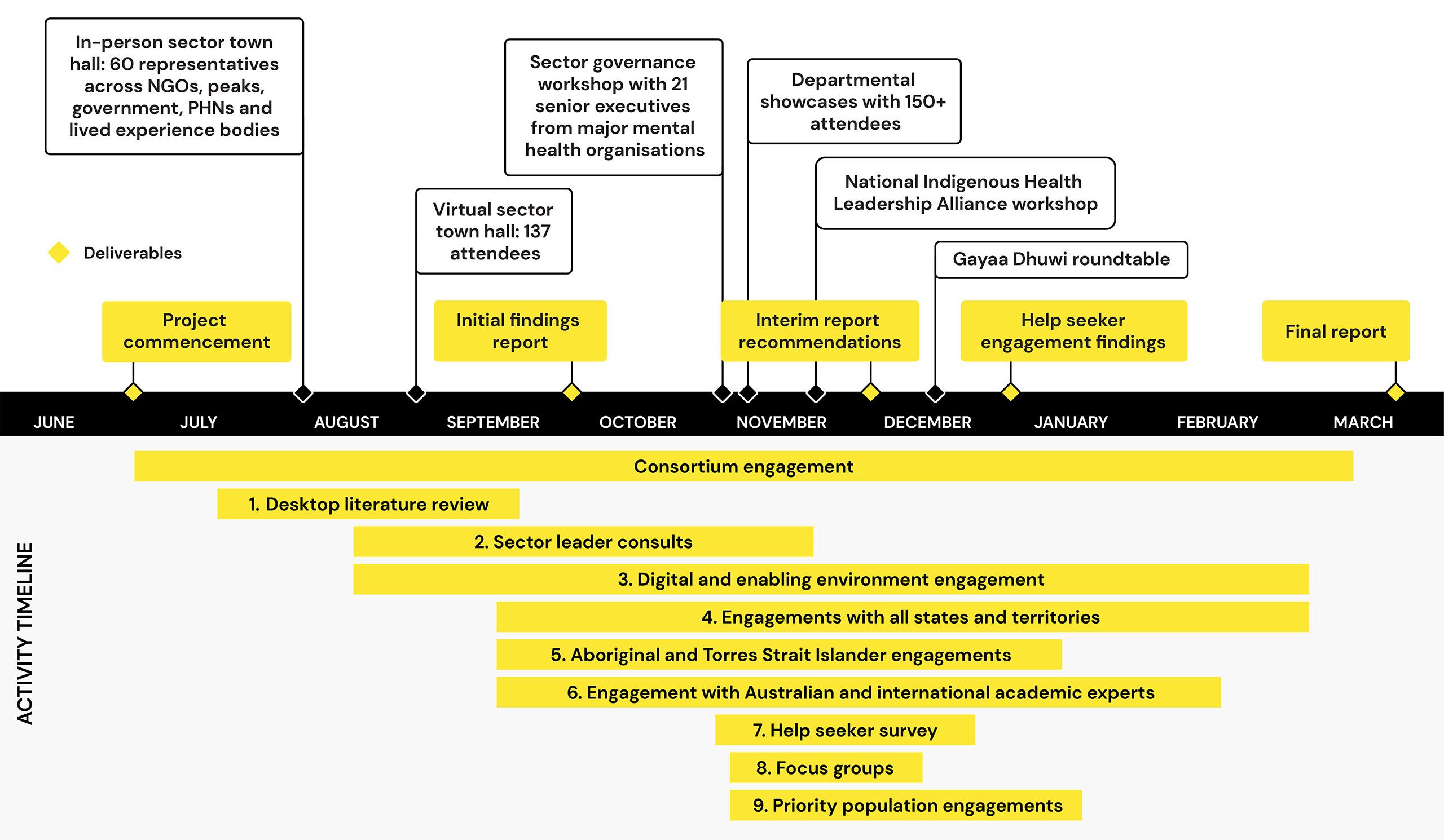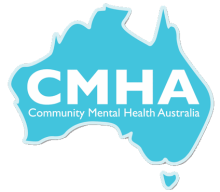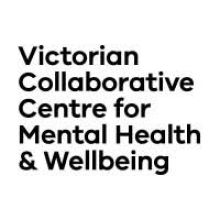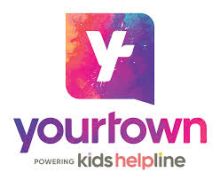Too often, people seeking help for their mental health feel lost before they even begin.
From June 2024 – April 2025, The Department of Health and Aged Care funded SANE to lead a sector-wide investigation into the key reasons driving this issue.
The Digital Navigation Project did just that, working alongside the people who use, deliver, and support mental health care in Australia to understand what’s broken, and how to fix it.
The result?
A set of clear, practical recommendations to make the system easier to understand, more connected, and much more human.
WHAT WE DID
We led a collaborative project grounded in listening. Our team engaged people from across the sector to understand where things are going wrong – and how it can be better.
We spoke to a lot of people.
2000+
stakeholders engaged
131
total consults
1300+
helpseekers
287
carers
239
professional and frontline workers
40
sector organisations and service providers
36
peak and advocacy bodies
30
state, territory, commonwealth, PHN stakeholders
18
research and academic institutions
Over 10 months.

What we found
Most people who experience mental health challenges struggle to find the right help.
- Help seeker survey respondent
There isn’t a simple, straightforward resource to rely on… our system is broken.
People fall through the cracks too easily.
- Help seeker focus group participant
When I needed support, I was homeless… not having somewhere safe to return to after an appointment made everything harder.
- Help seeker focus group participant
You can be in situations where you might be offered mental health support, but other factors in your life that span housing or finances – the real fundamental stuff – means that those are so front of mind, the mental health support isn’t doing much at that point.

Too many systems, not enough connection
Services are spread across different parts of the health system that don’t talk to each other.

No clear path
Care pathways aren’t standardized-so even professionals struggle to know what’s available.

More tools = more confusion
Multiple directories and tools exist, but many aren’t up to date or complete.

Missing information
Key details – like cost, eligibility, and wait times – are often hard to find.

Local support is invisible
Community-based services, which are often most helpful, are rarely included in national tools.

Systems don’t share info
People have to repeat their story over and over, with no smooth way to transition between services.
Our recommendations
Rather than building something brand new, these recommendations aim to strengthen and connect what already exists - so people can find help where they are, when they need it.
1. A Smarter Search Tool
An easy-to-use tool for both everyday people and clinicians. It matches needs to services, and works across the whole care journey.
2. A National Directory That Works
A connected, standardized directory that includes all relevant services – and makes info like availability, cost, and eligibility easy to find. Built by enhancing the National Health Services Directory.
3. Seamless Referrals
Tools that allow services to talk to each other, so help seekers don’t have to repeat their story every time and have an easier experience booking and managing services.
4. Mental Health Connected Care Governance
This connects all parts of the mental health system through mental health representation in the Council for Connected Care which oversees the current Interoperability Plan.
What this means for real people

For help seekers
1. Easier to find the right support
2. Better information, less frustration
3. More control over your care journey

For carers and families
1. More clarity to help loved ones
2. Greater visibility of community supports

For clinicians and service providers
1. More accurate info to guide referrals
2. Smoother booking and care coordination
3. Stronger links across the system

For the health system
1. Smarter use of resources
2. Less duplication
3. A stronger, more sustainable foundation
Improving the help-seeker experience: Unpacking the Digital Navigation report findings.
What’s next?
We’ve submitted the full report to the Federal Department of Health and Aged Care for review — and we’re excited about what comes next.
Have questions? Contact us at














